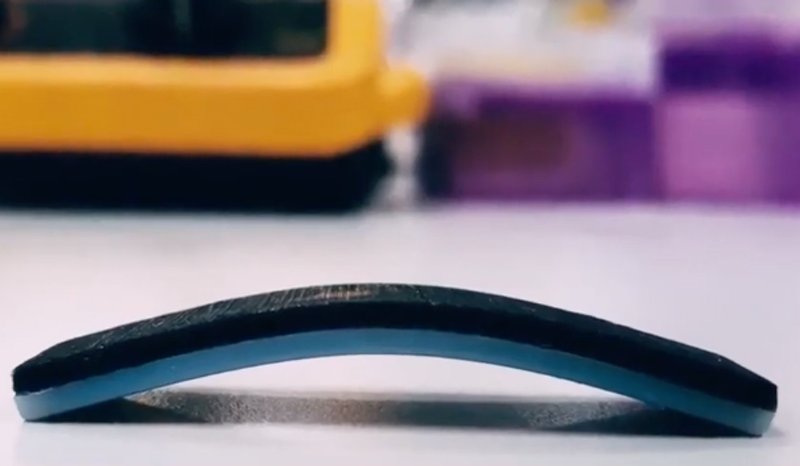A collaborative research project betweenSingapore University of Technology and Design(SUTD) andNanyang Technological University(NTU) has resulted in a 3D printed material changing its shape and back again numerous times without any electrical input.
The study is titled ‘Preliminary Investigation of the Reversible 4D Printing of a Dual-Layer Component’ and it is co-authored byAmelia Yilin Lee, Jia An, Chee Kai Chua and Yi Zhang. It was published in the journal工程in December of 2019.
Reversible 4D printing
When the shape of a 3D printed object changes over time, it is referred to as 4D printing. Reversible 4D printing refers to the ability to then change back to the original 3D printed shape. The initial changes in shape are usually caused by either heat or water, but the reversion often requires manual input in the form of stretching or pulling, which can be time-consuming and arduous.
Researchers have given automated reversible 4D printing some attention in recent years, with hydrogel being the main stimulus used to achieve reversibility without human intervention. Hydrogel lacks mechanical strength, however, so it is limited in its applications. Further work has utilized various layers of material as an alternative to hydrogel, but the procedure was only made more tedious.
SUTD和NTU的工作通过实现可逆的4D打印而无需水凝胶或人类输入来解决这些挑战。

VeroWhitePlus and TangoBlackPlus
The research used the materials VeroWhitePlus and TangoBlackPlus, which are readily available and compatible with the 3D polyjet process. The team first proved that these materials were able to retain considerable mechanical strength during and after changing shape.
The process involved swelling the elastomer with ethanol to replace the function of hydrogel swelling. This was to induce stress on the transition material. When heated, the transition material changed its shape to its second form. When the ethanol evaporated and the elastomer was dry, a secondary heating of the transition material reverted it back to its original shape, as the elastomer pulled the transition material back due to elastic energy stored in it after drying. The elastomer served a double function in the work, as it was used both to induce stress in the programming stage and to store elastic energy in the material during reversion.
The study also concluded that the reversion was more precise when using the present method, compared to manually forcing the object to revert. Reversible 4D printing is very much in its early stages but the collaborative project provided great insight into the mechanisms behind automated reversible 4D printing. The team hopes to carry on trialing the technique with new materials.
“虽然可逆的4D打印本身是一个很大的进步,但能够使用更强大的材料,同时确保在形状变化过程中更精确的逆转是革命性的,因为它使我们能够生产出通过常规制造很容易实现的复杂结构。通过依靠环境条件而不是电力,它使其成为各个行业的游戏规则改变者,完全改变了我们的设计,创建,包装和运输产品的方式。”。

通过合并下一个维度,4D打印自然是3D打印的下一步。但是,要使4D打印匹配当前3D打印技术的复杂性,研究人员必须磨练在给定时间段内创建光滑且复杂的表面的能力。Harvard Universityscientists have previously experimented with smooth and complex surfaces by 4D printingstructures that, when placed in saltwater, take on the shape of a human face。Elsewhere, atRutgers University研究人员创造了bioinspired, programmable microneedles that enhance tissue adhesionusing projection micro-stereolithography.
The nominations for the2020 3D印刷行业奖are now open. Who do you think should make the shortlists for this year’s show? Have your say now.
Subscribe to the3D Printing Industry newsletterfor the latest news in additive manufacturing. You can also stay connected by following us onTwitterand liking us onFacebook.
Looking for a career in additive manufacturing? Visit3D Printing Jobsfor a selection of roles in the industry.
Featured image shows a reversible 4D printed structure. Photo via SUTD.



